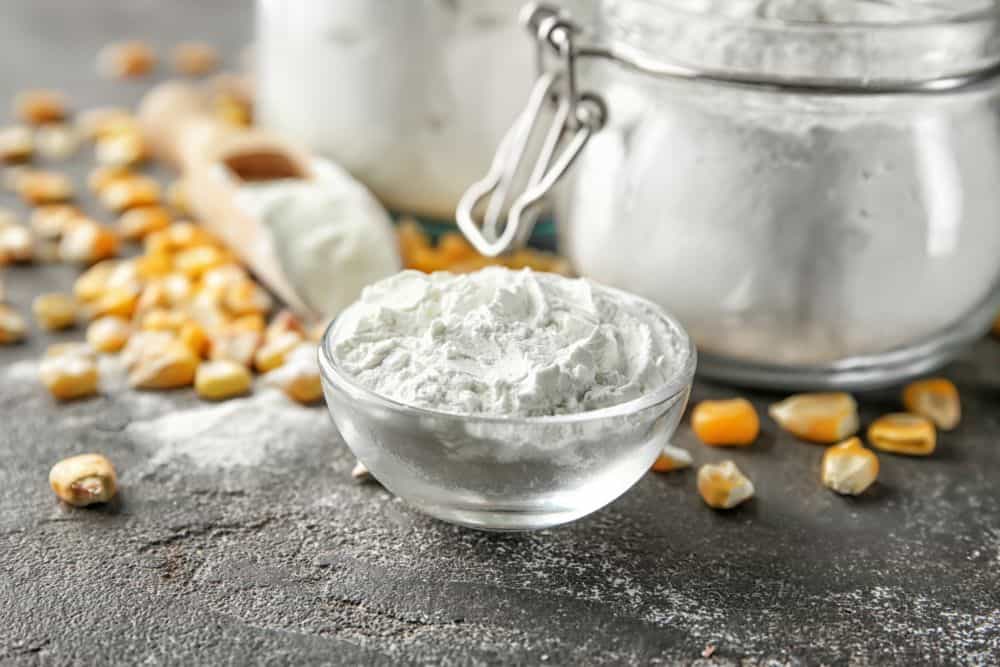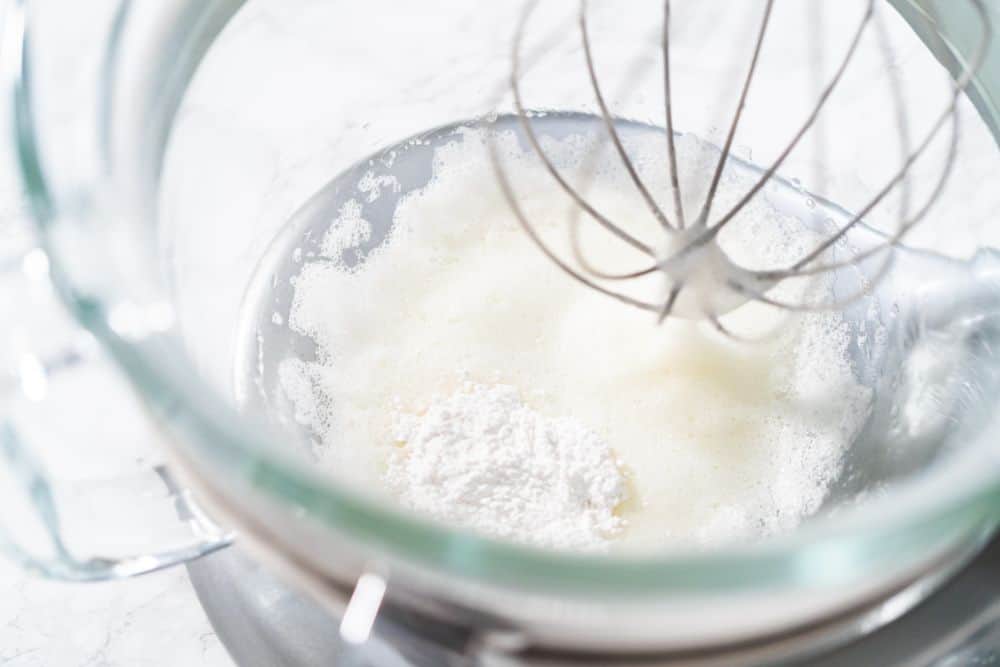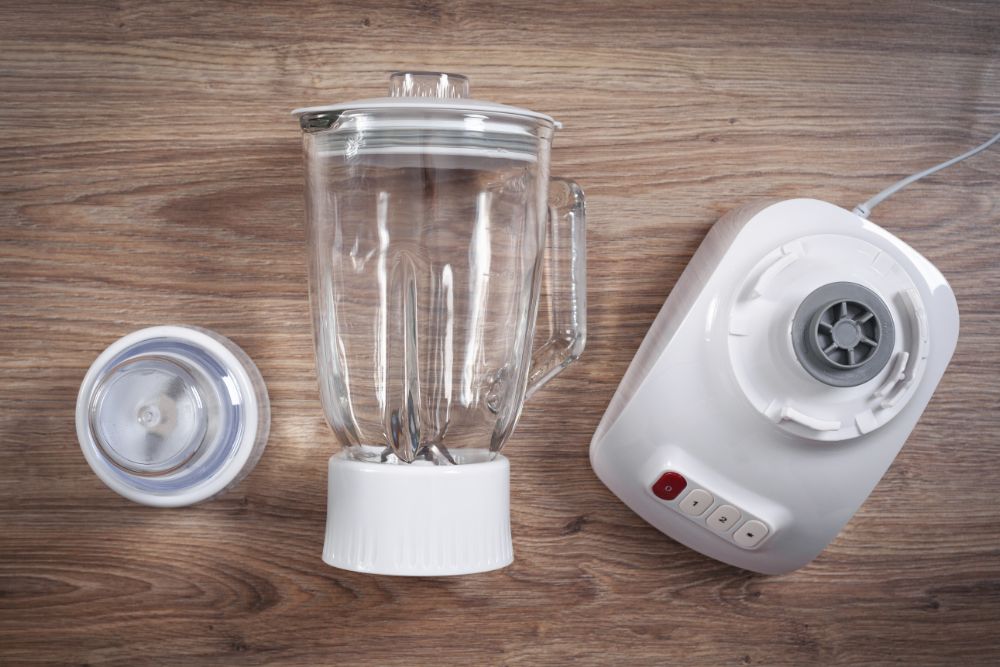Cornstarch, sometimes called corn flour, is a popular, gluten-free thickening agent used in sauces, gravies, stews, puddings, and more. This fine, white powder is a staple in most kitchens, and its wide application makes it very useful.
One of the main issues with cornstarch is clumping. Tossing cornstarch directly into a liquid all at once is an easy way to come up with unsightly, dry clumps of powder - not something you want in a fancy soup or a scrumptious stir fry.

Cornstarch Does Have a Tendency to Clump When Introduced to Liquid
Keeping your cornstarch from clumping isn’t impossible. You can make your cornstarch work for you with a few tips and tricks.
Although cornstarch is similar to other thickening agents like flour, arrowroot, potato starch, and wheat flour, it comes from an entirely different source. You guessed it: corn. Corn starch is made of a carbohydrate that comes from corn.
Not only can you use cornstarch to thicken sauce, but it’s also a popular ingredient for cleaning and industrial purposes. It has an indefinite shelf life and is handy to keep around the house.
If you store your cornstarch correctly, you shouldn’t have any problems with it clumping up inside the container. But if all the white powder sticks together, it likely means that your cornstarch has been exposed to moisture.
If your cornstarch gets wet inside its container, it’s probably ruined for good. Leaving your cornstarch wet in a container can cause mold and bacteria to grow, rendering it unsafe for use with food.
But the most common culprit of cornstarch clumping in the container is exposed to humidity. Cornstarch is usually stable when left in its original packaging, to be safe you may wish to repackage it in a canister or other airtight container.
Two great storage options for cornstarch are sealed mylar bags and mason jars, both of which will keep air and moisture out and prevent container clumping.
Container clumping is not nearly as prevalent as clumping during use. There are a few ways to prevent your cornstarch from clumping as you mix it into your favorite dish. Keep reading to learn more.
The easiest and most common way to mix any thickening agent, from cornstarch to rich flour and everything in between, is to make it into a slurry.
A cornstarch slurry is nothing more than cornstarch and water. There are two ways to do this. One is with a bowl and a fork or small whisk, and the second is with a mason jar.
Measure your cornstarch into a bowl. Add twice the amount of water to the cornstarch and mix the two using a fork or a whisk until you have a smooth, lump-free consistency. Add this mixture to your dish.
You can also combine your cornstarch and water in a mason jar. Screw on the lid and shake the jar vigorously until well combined with no lumps. Pour the slurry into your dish.
Some of you may be coming to this post a little too late to use our first tip above. You have started your dish, added the thickening agent, and now you have clumps. What should you do?
Start by taking a large fork or whisk and use it to break up as many large clumps of cornstarch as possible. Press the clumps against the sides or bottoms of your pot or pan to break them into smaller sizes.

You Can Use a Whisk to Break Up Corn Starch
Once you’ve broken down the largest clumps in your dish, strain the liquid to catch all the small clumps. Pour your sauce or other mixture through a sieve. If you’re dealing with just a few tiny clumps, you may be able to press the lumps through the sieve with a spoon.
If you catch a lot of large clumps, transfer them from the sieve to a small bowl. Add water a little bit at a time as you whisk the clumps using a fork. Continue this until you have a smooth liquid, then pour it into your dish and stir to combine.
If you’re working with a sauce or a gravy that doesn’t contain other elements, such as vegetables or meat, you can use a blender to smooth out any lumps your cornstarch may have created.
Add your entire mixture to a blender and blend everything up. When you’re finished blending, pour your sauce or gravy through a sieve to weed out any remaining lumps. The leftover lumps should be small enough to toss.
You can keep things easier by leaving your sauce in its pan and using an immersion blender if you own one. An immersion blender goes beneath the surface of the sauce or gravy and blends from underneath, which prevents you from dirtying another large appliance.

You Can Even Use a Blender to Break Up Corn Starch Clumping
Use the immersion blender in your mixture to target clumps of cornstarch.
As we’ve already mentioned, cornstarch has proven to be an essential ingredient in the kitchen. So, when you’ve run out, it can cause an issue.
Although cornstarch is twice as effective at thickening as flour, flour makes a worthy substitute in many recipes. To swap flour for cornstarch, use twice as much flour.
If you need to stick with a gluten-free option, you can substitute arrowroot for cornstarch. Arrowroot is just as thickening as cornstarch and has the same consistency. Unlike flour, you can use the same amount of arrowroot as you would cornstarch.
Though lesser-known than the other options on the list, tapioca starch makes an excellent thickener. It comes from the cassava plant and is common in bread, noodles, pudding, soups, and more. Like flour, you’ll need twice as much tapioca starch as cornstarch.
Xanthan gum is another thickening agent that serves as a base for many thickening products. It’s very similar to cornstarch and even comes from the same plant. This product is made by introducing bacteria to fermenting corn sugar.
You can use xanthan gum as a one-to-one, gluten-free substitute.
Cornstarch is a super valuable kitchen ingredient, but it takes a little bit of culinary knowledge to use it properly. Using our tips and tricks above, you can master the art of thickening and create some fantastic dishes - sans clumps.
